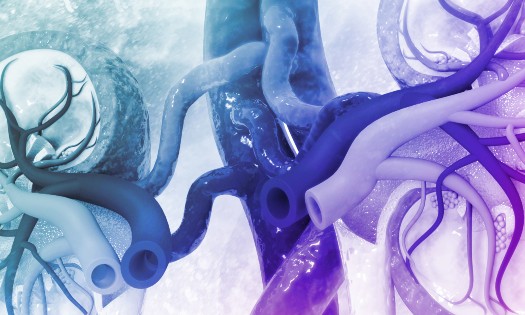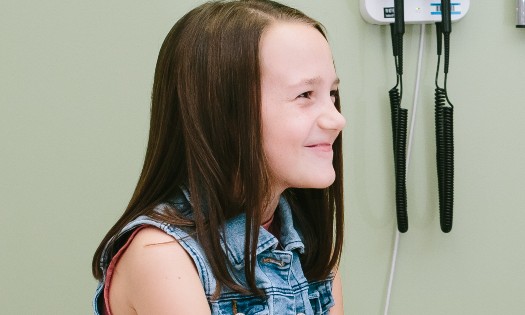Tests for measuring kidney function and bone density are widely known and used by many adult institutions. But these are not as commonly used in the pediatric population and the interpretation of these tests requires understanding of the child’s clinical state. Pediatric nephrologists at Children’s Medical Center Dallas, part of the Children’s HealthSM system, go beyond the numbers to interpret results and recommend the best form of treatment.
Different factors, such as illness, hydration status, current medications, muscle growth and bone density should be considered when interpreting renal test results and evaluating kidney health. Several comprehensive tests are used to assess overall kidney health and function, including Glofil and DEXA scans. Typically, these tests are performed by the radiology department – but Mouin Seikaly, M.D., Pediatric Nephrologist at Children’s Health and Professor at UT Southwestern houses them together within the nephrology department.
Children’s Health is one of the few hospitals in the United States to use Glofil in children, which Dr. Seikaly adapted for use in pediatrics decades ago. Dr. Seikaly and his team also help referring physicians to interpret and understand these tests in the context of their patients’ illness. When needed, Dr. Seikaly recommends a clinical course of action based on these test results. This service is not available when these tests are performed within radiology departments where the reports do not include availability of clinical counseling.
Clinical advice plays a key role in determining what kind of treatment a child needs, from dialysis and medication to surgery. These treatments vary greatly and can make life-changing improvements for children with a variety of conditions, from kidney and liver transplant to blood cancer.
“Renal testing results need to be accurate and contextualized so that physicians avoid going down unnecessary paths and provide the most beneficial care for each child,” says Dr. Seikaly.
Key details: Glofil, glomerular filtration rate (GRF) and DEXA scans
Glofil is used for measuring kidney function and DEXA scans assess bone density.
The Glofil test measures glomerular filtration rate (GFR) by tracing the kidneys’ filtration of 125I-iothalamate, a radiolabeled contrasting agent, over a series of blood tests in a 5 to 6 hour period. Despite multiple studies showing it to be more accurate than estimated glomerular filtration rate (eGFR). Most pediatric centers don’t offer Glofil testing, because eGFR is simpler. GFR is estimated by formulae and/or urine collection for creatinine clearance. Dr. Seikaly has shown through studies done at Children’s Health, that formulae for eGFR are inaccurate in many patient groups. At other institutions, Glofil is typically offered through the radiology department, which handles substances like iothalamate. At Children’s Health Glofil is offered through the Nephrology clinic.
“We adapted Glofil for use in children in-house. eGFR when used, often overestimates GFR and can give the false sense that kidney function is okay. This can adversely impact clinical decisions made by referring providers,” says Dr. Seikaly.
In addition, DEXA scans have been adopted to evaluate bone health because a decline in a child’s bone density is often an outcome of chronic kidney disease. This is why Dr. Seikaly adopted DEXA scans to assess bone health in children approaching kidney transplant and those living with arthritis, spina bifida, anorexia nervosa and other conditions.
Regardless of the test, Dr. Seikaly is careful not to take results at face value.
How clinical interpretation puts results into context for accurate treatment
Glofil results affected by illness
Imagine a hematology-oncology patient who needs chemotherapy. The child is on record with an eGFR of 90 ml/min/1.73m2, but their oncologist needs an accurate measure of GFR so they can set the right dose. The patient is tested again using Glofil, and now their number is 60 ml/min/1.73m2. The oncology team now may adjust dosing of chemotherapy based to this more accurate measure of GFR.
While radiology’s job stops at reporting the number, Dr. Seikaly works with the patient’s providers to investigate clinical explanations. Some of which – such as the child being sick or dehydrated – can temporarily lower GFR, making a child’s kidney function appear worse than it is.
“If the child was sick, we would test again when they’re healthy so we can get an accurate number and set the right chemo dose,” explains Dr. Seikaly.
eGFR results affected by muscle growth
Estimated GFR values also benefit from context. Creatinine, for example, is made by muscles.
“A higher creatinine level may mean a decline in kidney function, or it may simply mean the child is growing,” explains Dr. Seikaly.
Monitoring progression of GFR by obtaining serial Glofils is helpful in the management of many clinical situations. That’s why it’s crucial to have a baseline GFR established through Glofil testing, and why Dr. Seikaly orders annual Glofil tests in some clinical scenarios, including those with advanced chronic kidney disease and kidney transplants recipients.
For one recent transplant patient, blood tests showed an increase in creatinine, so Dr. Seikaly ordered a Glofil test to double check. The result was stable compared to the child’s Glofil result the year before, so he was assured their kidneys were fine: The child simply had an increased muscle mass as a result of a recent growth spurt.
“Had I trusted the eGFR by itself, it would have led to a biopsy and a whole sequence of unnecessary steps,” he says.
DEXA scans: Navigating the nuances
DEXA scan software automatically compares a child's bone density to that of other children of the same age, ethnicity and gender.
While bone density is commonly considered low, high or normal based on a child’s chronological age, Dr. Seikaly says this overlooks an important fact: Bone density is a factor of height, not age. Dr. Seikaly again has conducted studies at Children’s Health to show that DEXA scans have to be interpreted within the clinical context of the patient. DEXA scans in children with shorter stature than their matched peers, have to be interpreted within the context of their height age and not chronological age. Otherwise, we could potentially overestimate their degree of osteopenia.
“An 8-year-old who is short for her age will naturally have lower bone density than an 8-year-old who is of average height,” he explains.
By comparing children to others of the same height, rather than the same age, Dr. Seikaly and his team helps referring physicians make better-informed decisions and avoid unnecessary interventions.
“It’s another way that going beyond the numbers helps children get better care,” he says.
Why Children’s Health: Accurate GFR and bone density tests from the team who developed them
The renal testing service at Children’s Health grew out of research Dr. Seikaly led studying the effects of growth hormone therapy on kidney function in children. He needed to track exact GFR and bone density for his patients in the study, so he adapted the Glofil test and started using DEXA scans based on their use in adults. Dr. Seikaly and Children’s Health recognized that other children could benefit from Glofil and DEXA scans.
Since then, the nephrology team has provided DEXA scans not only for its own patients – but for children with kidney transplants, muscular dystrophy, anorexia nervosa and other conditions referred by hepatologists, endocrinologists, psychiatrists, and others outside Children’s Health.
These tests have paved the way for better outcomes and more successful kidney transplants in children.
Learn more about comprehensive, accurate renal testing at Children’s Health >>


